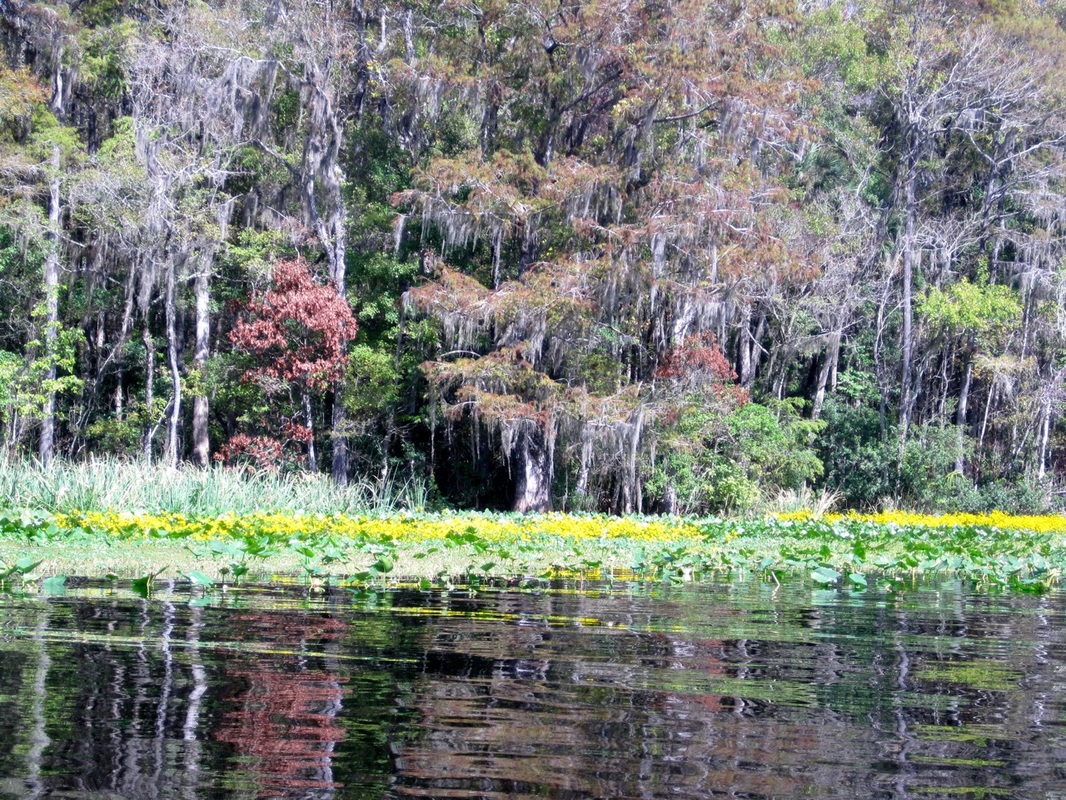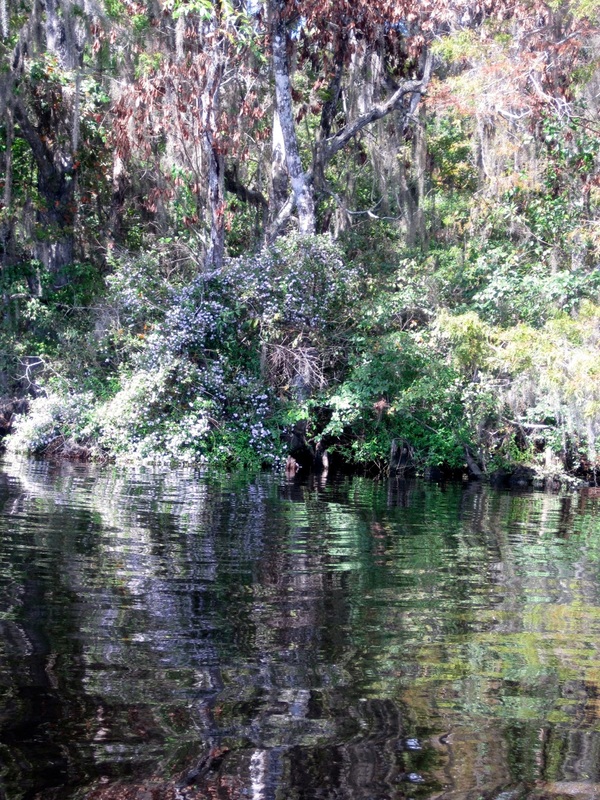|
This post was written by Jay Bushnell, former president of Friends.
Fall has always been a special time of year on the river for me. This year is different. The climbing asters with the unbelievable fragrance and the blankets of yellow flower nestled among the bonnets are still there to enjoy. However, notice the dark reddish brown leaves in these two pictures. These are dead Red Bay trees. It has been estimated that the Red Bay ambrosia beetle arrived in 2002 on pallets at ports near Savannah from somewhere in Asia. The beetle lays its eggs in the tree causing laurel wilt fungus which kills the tree. Do a web search and you will find ‘extinction’ associated with the Red Bay trees. If so, we are witnessing extinction first hand. This would be just another casualty of the globalization of world economies. As would be expected, other life forms are also affected. For example, the paradises swallow tail, Schaus and spicebush butterflies are dependent on the Red Bay. It would be an understatement to say that the beetle is spreading fast across the Southeastern US. It is not known what affect the beetle will have on other species. Nor does there seem to be a plan to combat the beetle. Comments are closed.
|
Archives
June 2024
|

Friends of the Lower Suwannee & Cedar Keys National Wildlife Refuges
P. O. Box 532 Cedar Key, FL 32625 [email protected] We are a 501(c)(3) nonprofit organization. |
|

